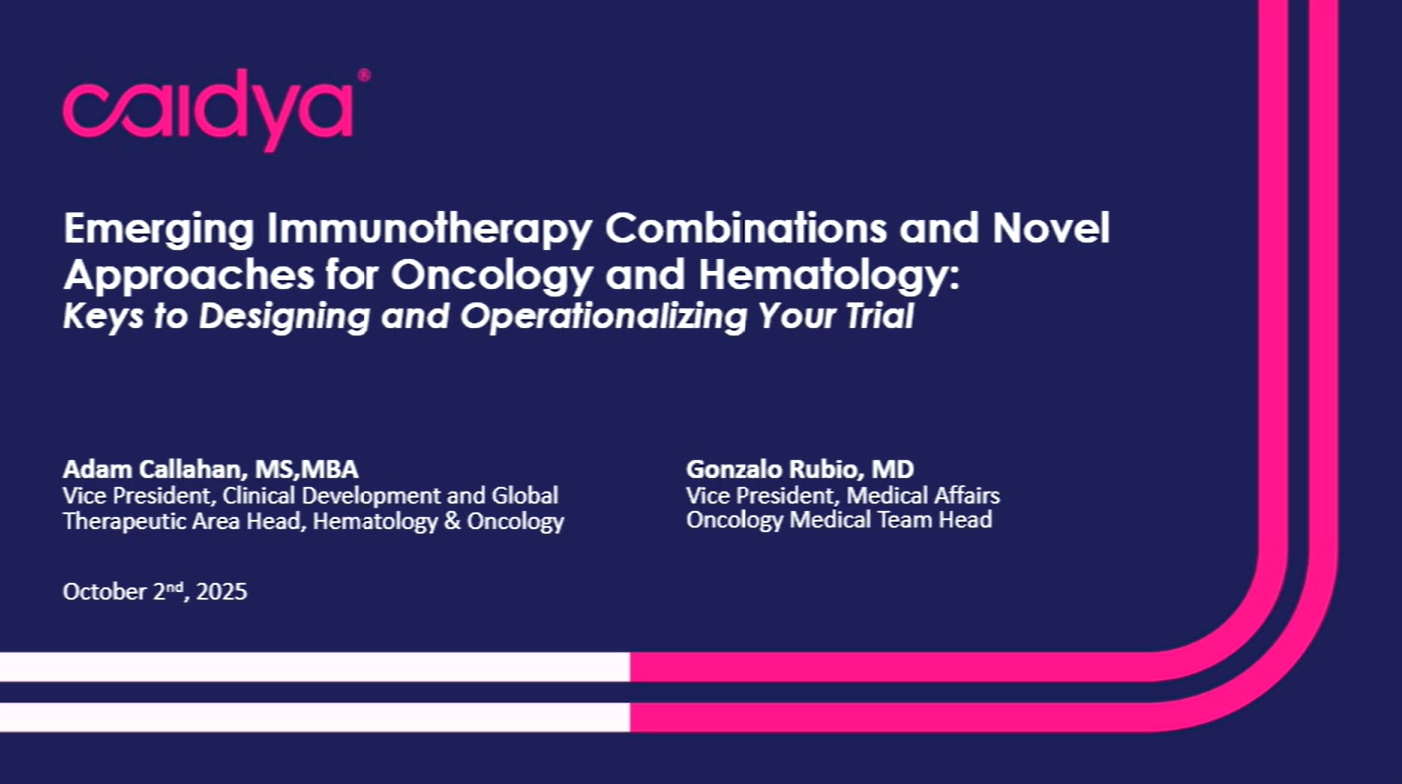
Developing oncology medications is a complicated and costly process. While clinical trial designs have improved, these trials still face difficulties in recruiting and retaining patients, conforming to a changing regulatory environment, and differentiating actionable information from the sheer volume of data generated from clinical trials.
For sponsors, these obstacles translate into increased costs and heightened risks. For investors, these obstacles raise the stakes in where and how to invest when evaluating biopharma innovators and their new drugs in development.
Early engagement and collaboration with strategic clinical research organizations (CROs) can help address many of these challenges by providing sponsors with the right subject matter expertise (SME) and operational infrastructure to generate reliable and actionable datasets to reassure potential investors and inform timely decision-making.
Pharma industry investors speaking at the Advanced Therapies 2024 conference emphasized that “the first thing [investors] want to see is science.” Strong science-backed platforms are seen as vital in helping early-stage companies improve their chances of attaining higher initial public offerings (IPOs) valuations and attracting partnerships, independent of market conditions. Having the right CRO partner involved early, and at key inflection points, can strengthen a sponsor’s scientific case, ensuring that study design, operational plan, and data integrity all endure the scrutiny of regulators and potential investors.
Investment trends and the pressure for stronger science
The emphasis on early-stage clinical findings is backed up by the data. The ten largest pharmaceutical deals in Q2 of 2025 were concentrated in the early trial stages, according to GlobalData research. These data underscore investor appetite for strong foundational science and an evidence generation strategy that drive early data read-outs even in a contracting market. For example, there is a general trend in pharma investments that has seen an overall fall in deal volume and value since 2021. In Q1 2021, overall investment in pharma stood at $18.1bn with 484 deals. By Q1 2025, this had fallen to $6.9bn of investment with just 175 deals, according to GlobalData analysis. Also, while investment in oncology drug development has dominated the market, it is not fully insulated against a contraction of funding. Deal volume and value both declined between H1 2024 and H1 2025, with a 39.8% reduction in the value of deals and a 24.3% drop in deal volume.
The effect of early data on investor confidence and trial success
Incremental evidence generation and clinical data ranks as one of the top three drivers of biotech and pharma investment, alongside the probability of approval and commercial success of the drug. Importantly, early clinical findings can influence all three. Safety and efficacy data from Phases I and II clinical trials are critical. Positive early results are often linked to identifying precise targeted patient populations. Sponsors can experience greater success through partner-level collaborations with a savvy CROs who provide essential insights, a deep understanding of the patient journey, identification of the specific targeted patient population (TPP), patient recruitment strategies, trial site selection, and protocol optimization.
Biomarkers also play a crucial role in early oncology drug development, from dose finding and optimization to identification of the right TPP to the prevention and mitigation of adverse reactions. Oncology researchers note that early phase proof-of-concept studies should be explicitly designed to address biomarker-related questions, as this improves the likelihood of success for new drug development. Expertise from a CRO partner can be invaluable in aligning study design to a biomarker strategy that meets medical, scientific, and investor expectations.
Early data as a driver of partnerships and acquisitions
Robust clinical data from Phase I and II clinical programs not only attracts capital it also drives strategic partnerships. For example, licensing agreements, co-development collaborations, and acquisitions often depend on the strength of early read outs or full data from Phase I and II clinical trials. In recent years, big pharma companies have entered billion-dollar partnerships based on promising but preliminary oncology trial results. In January 2025, for example, GSK acquired IDRx, a biotech focused on developing treatments with IDX042 in gastrointestinal cancers. That deal underscores how preliminary data can unlock billion-dollar transactions.
CRO collaboration can be a differentiator. By ensuring that early trials are designed and executed to maximize insight and value-add. CROs not only help sponsors design and execute clinical trials, they are valuable partners for generating the evidence to attract funding. So, strategic CROs are credible partners for biopharma innovators and larger pharmaceutical companies.
Strengthening early data with CRO innovation
Given the importance of early data, sponsors increasingly rely on CROs to integrate evidence generation strategies that combine medical and scientific knowledge, regulatory strategy expertise, trial management and operations, and digital technologies.
Sponsors need near real-time visibility into trial performance and evidence generation, with an ability to see early data across disparate systems in one unified view. Sponsors need to ensure that vital and sensitive information remains secure yet accessible. This is a critical advantage in oncology drug development, where precision, speed, and trust are paramount.
In an investment environment characterized by reduced deal flow and investor caution, the strength and quality of early data is critical to success. For biopharma innovators in the oncology drug development space, the ability to generate reliable datasets in early trials can inform the likelihood of a drug successfully being commercialized.
In today’s drug development ecosystem, solid early data represent indicators of future success for biopharma innovators, their investors, and above all: patients.
To learn more about Caidya’s solutions, download the document below.




